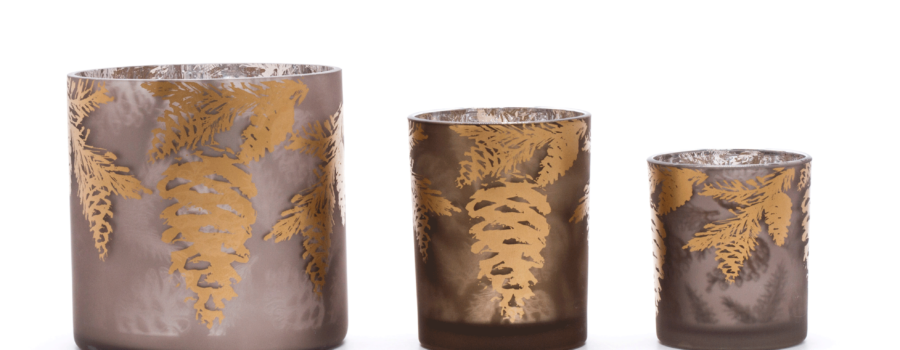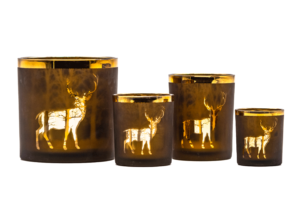Glass making is a very ancient craft, and archaeological data prove that glass production can be traced back to before 2500 BC. Making glass, once a very rare and precious art, has now evolved into a common industry. Glass products are used in commercial and domestic applications as containers, insulators, reinforcing fibers, lenses, and decorative arts. Although the materials used to make glass vary, the process is largely the same, as explained below.
use a stove or kiln
Prepare silica sand. Silica sand, also known as quartz sand, is the main material for making glass. To make clear glass flakes, you need glass that is free of iron impurities, because the presence of iron will cause the glass to appear green.

- Wear a face covering if you handle ultrafine silica sand, or it can cause throat and lung discomfort if you accidentally inhale it.
- You can buy silica sand online, usually not too expensive. If you want to operate on an industrial scale, specialized retailers can offer great prices for bulk orders.
- If you can’t find silica sand that does not contain iron impurities, add a little manganese dioxide to counteract the coloring effect of iron. Or if you want to make green glass, just leave the iron in there.
Add sodium carbonate and calcium oxide to the silica sand. Sodium carbonate (commonly known as washing soda) lowers the temperature required to make glass commercially. However, sodium carbonate causes water to flow through the glass, so calcium oxide or lime must be added to make the glass insoluble in water. Additionally, you can add magnesium oxide and/or aluminum oxide to make the resulting glass more durable. Typically, these additives make up no more than 26 to 30 percent of the glass mixture.

Add other chemicals according to the glass’s intended use. The most common addition to decorative glass is lead oxide, which makes crystal glassware sparkle, adds softness, makes the glass easier to cut, and lowers the melting point. Spectacle lenses may contain lanthanum oxide because of its refractive properties, while iron helps the glass absorb heat.
Lead crystal glass (man-made crystal) contains up to 33% lead oxide. However, the more lead oxide is used, the better the technology is required to shape the glass melt, so many crystal manufacturers choose to use lower lead content.

Add chemicals to bring the glass to the desired color (if available). As mentioned above, the iron impurity of the quartz grit is what makes the glass green, so you can add iron oxide to increase the green tint, and copper oxide will do the same. Sulfides can produce shades of yellow, amber, brown or even black, depending on how much carbon or iron is also added to the glass mixture.

Place the glass mixture in a heat-resistant crucible or holder. The container should be able to withstand the extremely high temperatures in the kiln. Depending on the additives you use, the melting point of the glass mixture is in the range of 15,000 to 2,500 degrees Celsius. The container you use should also be easily controlled by metal hooks and rods.
Silica sand without additives turns into glass at 2300 degrees Celsius (4172 degrees Fahrenheit). Adding sodium carbonate (soda, washing soda) lowers the temperature required to make glass to 1500 degrees Celsius (2732 degrees Fahrenheit).

Melt the mixture into a liquid state. Commercial silica glass can be made in a gas furnace, while special glasses need to be made using electric melters, crucible furnaces or kilns.

Homogenize the glass melt and remove air bubbles. This means you need to stir the mixture to a firm consistency and add chemicals such as sodium nitrate, sodium chloride or antimony oxide.

Shape the molten glass. You can shape glass in one of the following ways:
- Pour the molten glass into the mold and let it cool. This method was used by the ancient Egyptians and is how many lenses are shaped today.
- You can collect a large amount of molten glass at the end of a hollow tube and blow air from the other end of the tube as you spin it. Glass is shaped by the air that enters the hollow tube, the action of gravity, and the tools used by the glassblower.
- Pour the molten glass into a tin tank, float on the surface of the relatively dense tin liquid, and slowly form under the action of pressurized nitrogen. The glass produced by this method is called float glass and has been used to make flat glass since the 1950s.
Allow the glass to cool. Do not place the glass in a place where it will be disturbed or where dust, leaves, or water droplets will fall. Exposure of cool substances to hot glass can cause the glass to burst.

Glass is strengthened by heat treatment. This process, called annealing, removes any stress points that formed on the glass during cooling. Glass that has not been annealed is significantly more fragile. Once this process is complete, the glass can then be coated, laminated, or otherwise treated to improve strength and durability.
- The precise temperature for annealing varies, depending on the exact composition of the glass, from as low as 399 degrees Celsius (750 degrees Fahrenheit) to as high as 538 degrees Celsius (1000 degrees Fahrenheit). [3] Glass also cools at different rates, generally larger pieces of glass must be cooled slower than smaller pieces. Investigate the correct annealing method before starting annealing.
- Another related process is tempering, where the polished, shaped glass is heated in an oven to at least 600 degrees Celsius (1112 degrees Fahrenheit), and then rapidly cooled (quenched) in air under high pressure. Annealed glass will shatter at 6000 psi (421.94 kg/cm2), while tempered glass will shatter at no more than 10000 psi (703.23 kg/cm2), typically around 24000 psi (1687.76 kg/cm2).

Make a makeshift stove with a charcoal grill. This method uses the heat from a large charcoal fire to melt silica sand into glass. The materials you need to use are relatively cheap and common, and in theory, you only need to make a trip to the hardware store to have your own glass ready. Use a large charcoal grill, a standard size round grill will do. Use the sturdiest grill. Most charcoal grills have a vent on the bottom, open that vent.
- Even at the extremely hot temperatures that can be achieved with this method, it is very difficult to melt the silica sand in the grill. You can add a little (one-third or one-quarter of the amount of silica sand used) sodium carbonate (washing soda), lime, and/or borax to the sand before you start. These additives lower the melting point of silica sand.
- If you’re going to make glass by blowing, you’ll need a long, hollow metal tube. If you are going to put it into a mold, please prepare the mold in advance. If you want a mold that won’t get burned or melted by the heat of the molten glass, use a graphite mold.

Understand the dangers of this method. This method will force the traditional grill to burn above its normal temperature limit, so hot that it may even melt the grill itself. Serious injury or death can result if this method is performed recklessly. Please proceed with caution. Keep plenty of dirt, sand, or a fire extinguisher for heat to help put out the fire if necessary.

Take every possible precaution to protect yourself and your property from injury in the heat. Perform this method on a large concrete surface in an outdoor space. Never use any irreplaceable utensils. Do not stand near the grill while you are heating the glass. You should also try to wear protective clothing, including:
- Industrial Thermal Gloves
- welding mask
- Industrial Apron
- heat resistant clothing

Get a workshop vacuum with a long tube attached. Use duct tape or other means to angle the long tube so that it blows directly against the bottom vent without touching the grill body. You can also attach the long tube to one of the grill posts or wheels. Keep the main parts of the vacuum cleaner as far away from the grill as possible.
- Make sure the long tube is stable and immovable, you should not approach the grill if it is too hot if it comes loose during glass making.
- Start the vacuum cleaner to test the position of the long tube. The accurately positioned long tube should be blown directly into the vent.
Line the grill with charcoal. More charcoal whiskers are used than for grilling. Some people have had successful results by piling the charcoal to almost full. Place a cast iron pot or crucible containing silica sand in the middle of the grill, surrounded by charcoal.
Hardwood charcoal (charcoal bars) burns hotter and faster than briquettes, and if available, it would be a better choice.

Light the charcoal. You can read the charcoal packaging to see if the charcoal can be ignited directly or if you need a liquid. Let the flame spread evenly.
Wait for the charcoal to heat up. When the charcoal is light gray and glows orange, it means that they are hot. You can feel the heat just by standing near the grill.

Start the workshop vacuum to let the air into the charcoal. The charcoal can burn to very high temperatures (1093 degrees Celsius) when it comes into contact with the air coming from the bottom. Please be cautious, the fire may flare up suddenly.
If you still can’t get a high enough temperature, try replacing the cap while introducing air into the vent.

After the glass has melted, use a metal tool to take it out and shape it with extreme care. Since the grill method cannot achieve very high temperatures, the glass solution may be harder and harder to shape than the kiln made. The glass is formed according to conventional methods using hollow tubes, molds or other tools.



